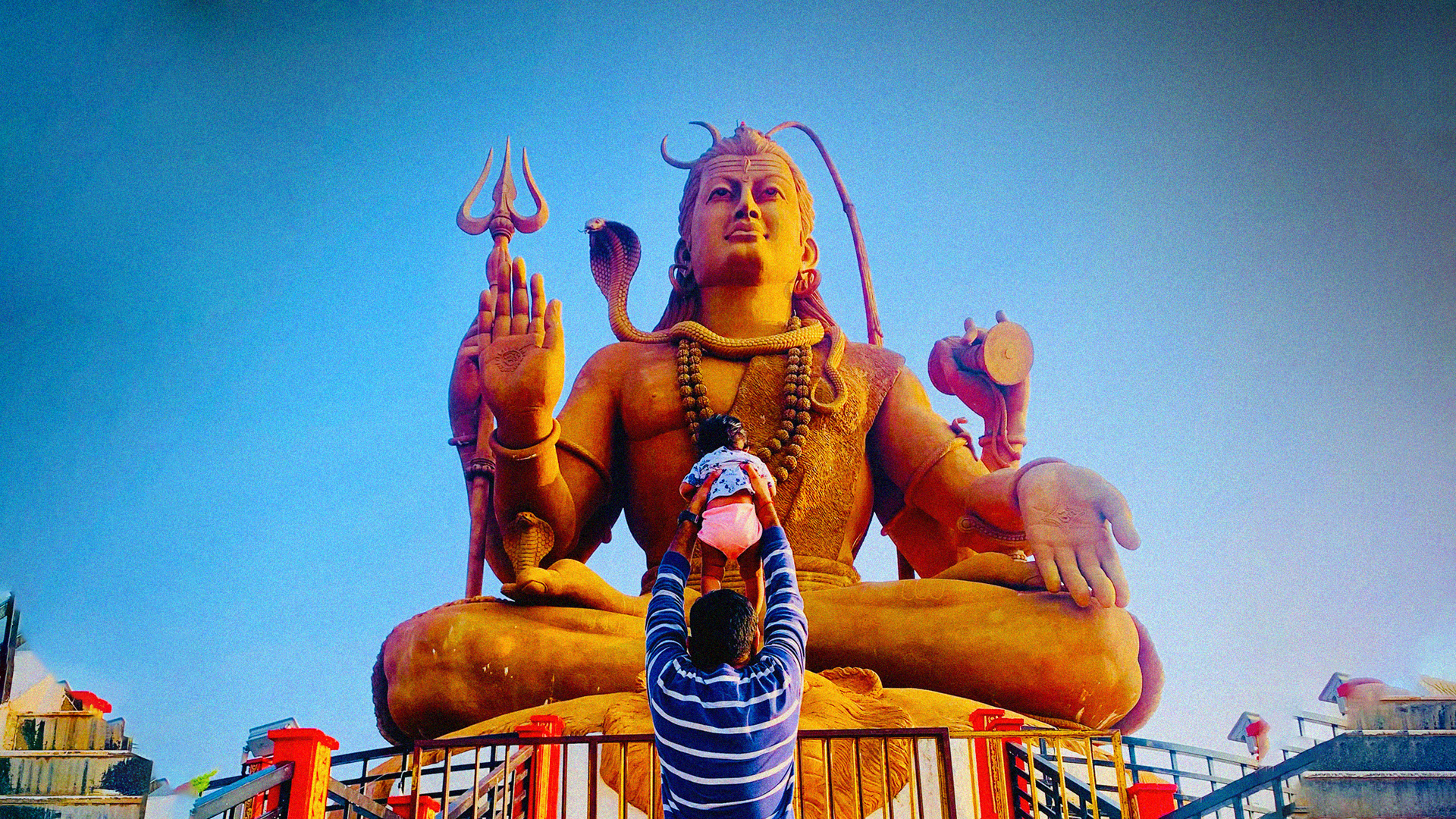The wonders of Sanatan Dharma never cease to amaze. To honour Lord Shiva, the Karnataka Government commissioned a Shiva Murti on the outskirts of Ramdurg, a town in the state’s Belgaum district.
• Its precise location is Dodamangadi Tree Park (Mullur Gudda), which stands 2.3km from Ramdurg.
• The statue was unveiled in 2018, and draws hundreds of thousands of devotees, tourists, and visitors to date.
• It was raised to commemorate the Mahashivaratri festival that year.
• At 78 feet tall, this is one of India’s tallest Shiva Murti statues.
• Ramdurg’s Shiva Murti cost the state around INR 1.5 Crore to construct.
• Working on the statue’s every nuance and detail were Sridhar Murthy and his family, skilled artisans all.
🐘Lord Shiva called Mahadev @ Ramdurga. The third tallest statue of Lord #Shiva in the #karnataka was unveiled on the outskirts of #ramdurg town.Its 78-ft tall statue.
The statue is located in Dodamangadi amazing Tree Park (Mullur Gudda), 2.3km from Ramdug pic.twitter.com/cBnh049Yiz— Way To India (@Way_To_India) July 28, 2021
The regional MLA of Ramdurg, Ashok Pattan, performed the grand unveiling in the company of hundreds of devotees and local leaders. Ashok spearheaded the campaign for the statue. He went on record to state, “I took up this project as per the will of my parents…Ramdurg a tourist destination. Many…joined hands in the completion…I thank all of them.”
Noteworthy Facts About Shiva Murtis
India’s Shiva statue embraces potent spiritual, symbolic, and religious value. Not only is Shiva considered the creator of the universe, he is also responsible for its eventual destruction. He is considered formless and omnipresent. He is seen by many sages to be the Atman, i.e., immortal soul, of the Universe itself.
Must Read: Interesting Facts About Lonad Caves/ Khandeshwari Temple
• Shiva also enjoys the status of being the patron deity of yoga and meditation.
• In Hindu scripture, Shiva is depicted as Bholenath, an ascetic yogi who calls the Himalayas home.
• Shiva is also one of a handful of supreme deities known to bestow ‘Moksha’ – the liberation of a human soul from the cycle of life and death, or freedom from reincarnation.
Did you know that Shiva Murtis are also maintained inside homes? This is in keeping with Vaastu Shastra, i.e., ancient Indian traditional Vedic architecture.
• Specifics locations are assigned for the placement of a Shiva Murti indoors.
• It strengthens and reinforces positive vibrations and energies.
• It is ideally positioned in the most north-eastern part of the mandir. This stems from the belief that Lord Shiva and Goddess Parvati reside on Mount Kailash, and the north-eastern Murti placement pays homage to that direction.
The statue at Ramdurg is a symbolic reminder of Shiva’s benevolence and power. Known in Sanskrit as the ‘Auspicious One’, Karnataka’s mega statue of this deity reminds followers and devotees to remember the Lord’s basic epithets: Shambhu (‘Benign’), Shankara (‘Beneficent’), Mahesha (‘Great Lord’), and Mahadeva (‘Great God’).
Must Know –Murudeshwara Temple in Karnataka & Some Nearby Places in Murudeshwar
The Importance of Lord Shiva in Hindu Religion & Indian Culture
The ‘Great God’ is known to adopt various forms, each one having its own meaning and significance in sacred Hindu scripture. He is known to transform in the following ways…
• When he is with his consort Parvati and son Skanda, Shiva has often donned the form of Nataraja, i.e., the ‘cosmic dancer’. This form and pose hold supreme universal and mathematical meaning.
• He has also been recorded in the guise of a naked ascetic, devoid of worldly attachments.
• He has also come in the form of a mendicant beggar, ever humble and simple in the greater order of things.
• He has also taken the form of a Dalit, someone from the ‘untouchable’ community. In this Bhairavi form he is accompanied by a dog. There is great ‘unifying’ symbolism in this, for anyone who can see it.
• Finally, there’s Shiva’s ultra-powerful form, an androgynous union with his consort which sees one half of his body remaining male and another female. This ‘state’ is called Ardhanarishvara.
India’s Shiva statues hold great prestigious value for Indian culture. They remind us of the Lord’s teachings, but also our roots. We hail from a rich and gloried tradition called ‘Sanatan Dharma’, which has influenced our civilisation in numerous ways during ancient times. Here are more religious facts about the Almighty Shiva.
• He is also called the Lord of Cattle, or Pashupata. In this form, he can be either a benevolent herdsman of human souls or a merciless slaughterer who kills our ‘base’ desires and helps us attain purity so we can serve him better.
• The snake which is often seen around his neck is a symbol of wisdom and immortality. Just as the snake sheds its snake and becomes ‘anew’, so too does Shiva remain unchanging and everlasting.
• On a similar serpentine note, Shiva’s penchant for snakes makes him a master of both medicine and poison.
The veil you see in one of the hands of the Ramdurg Shiva statue is called a Trishul. The long handled trident is a divine symbol that directly represents Sanatan Dharma, adding to the potent meanings and multi-layered spirituality contained in this magnificent statue, which is one of India’s tallest Shiva Murtis.
Must Read: Dindigad Shiva Mandir Bhiwandi – The Manchester of India

Thanks for taking the time to discuss this, I feel strongly about it and love learning more on this topic. If possible, as you gain expertise, would you mind updating your blog with extra information? It is extremely helpful for me.